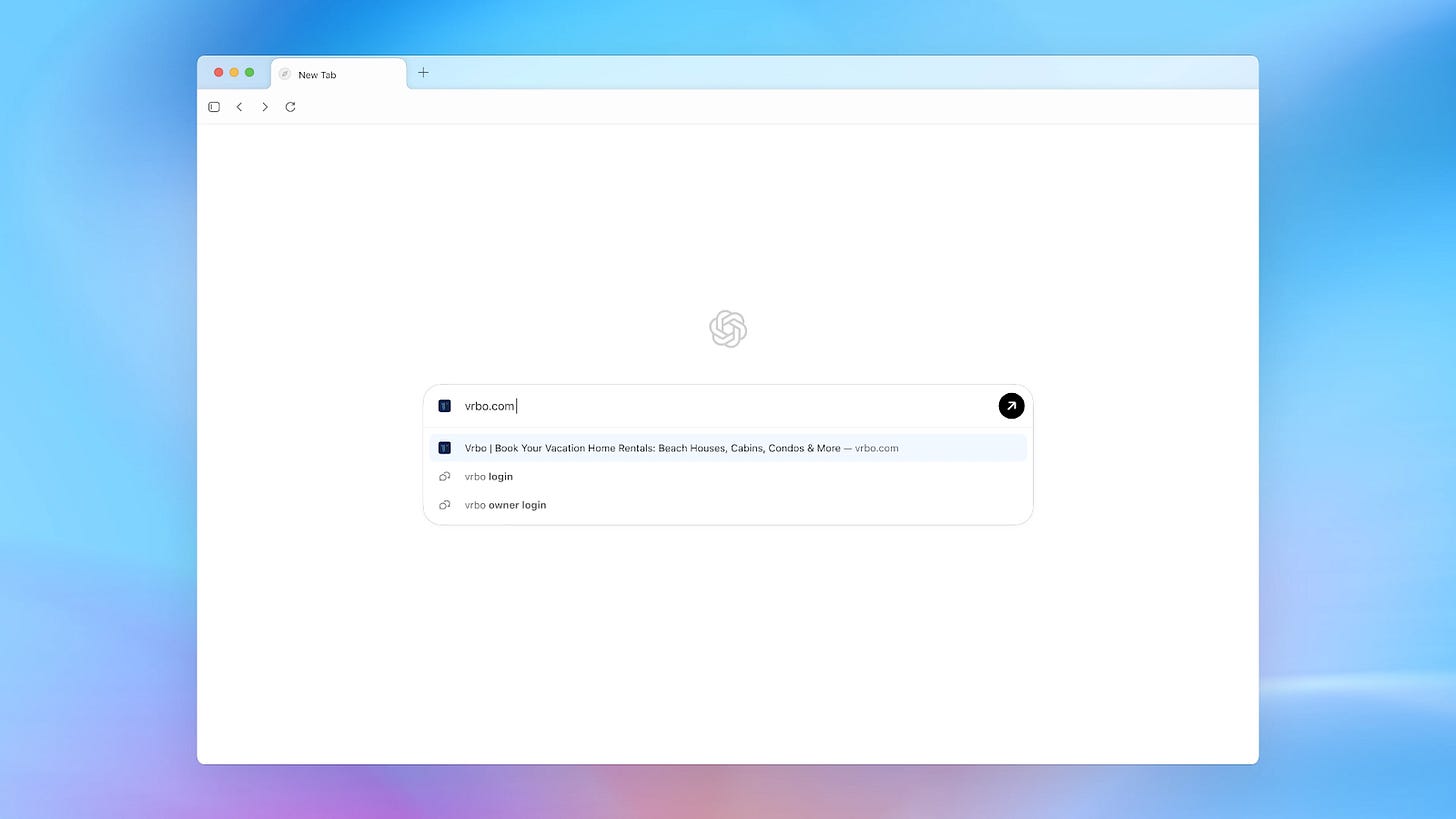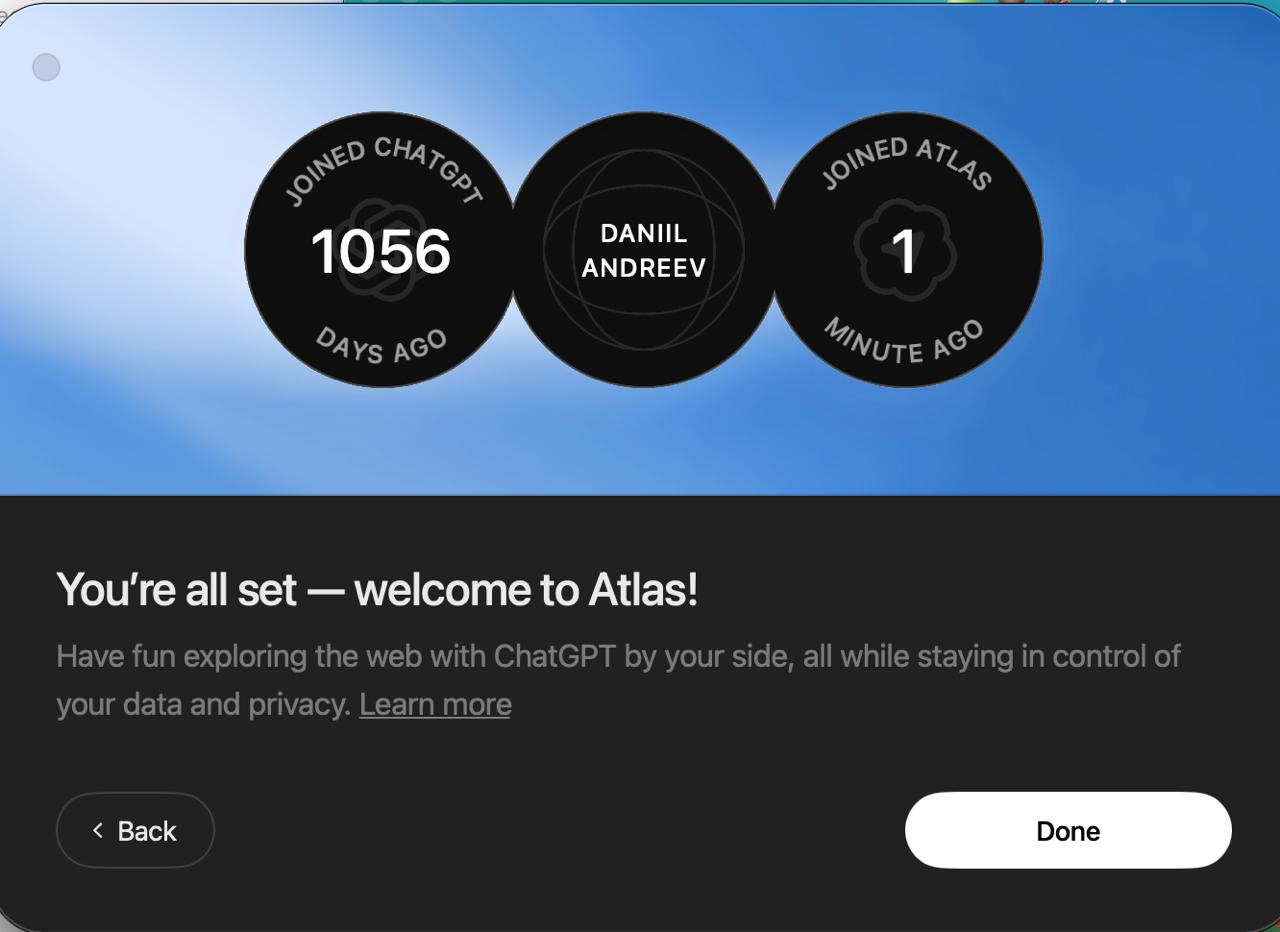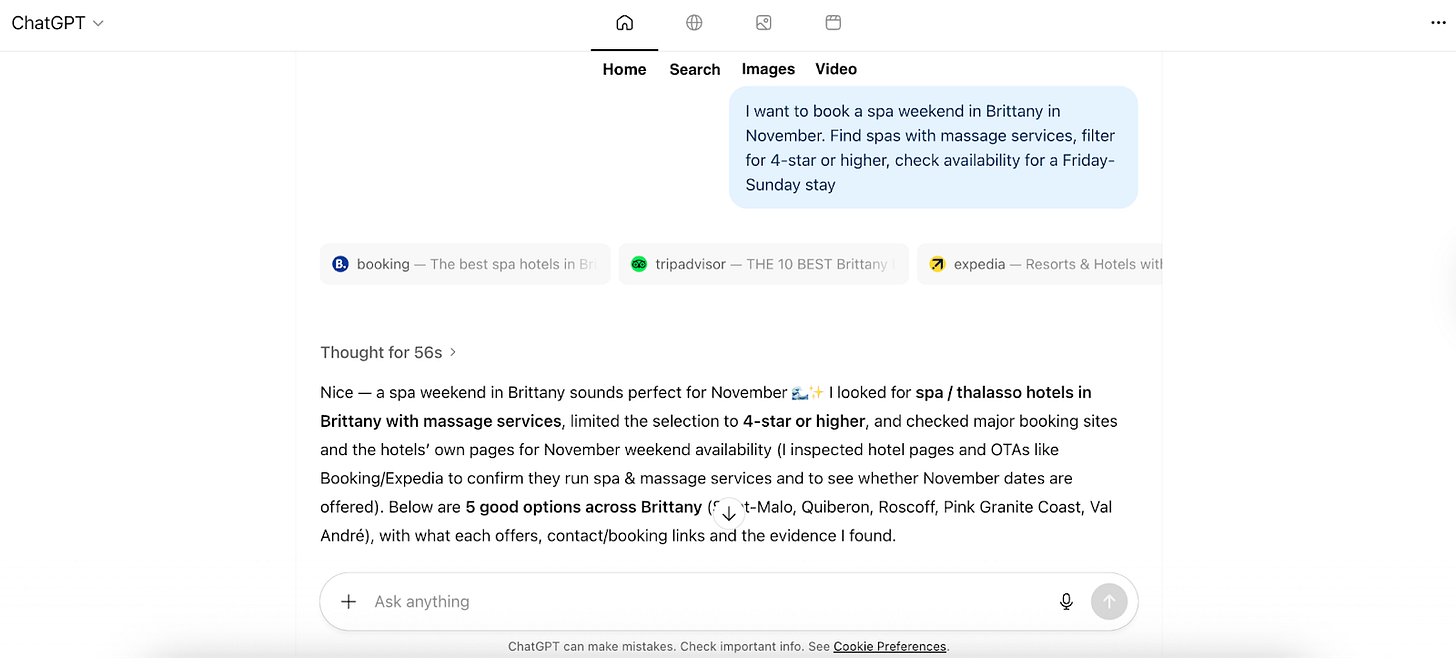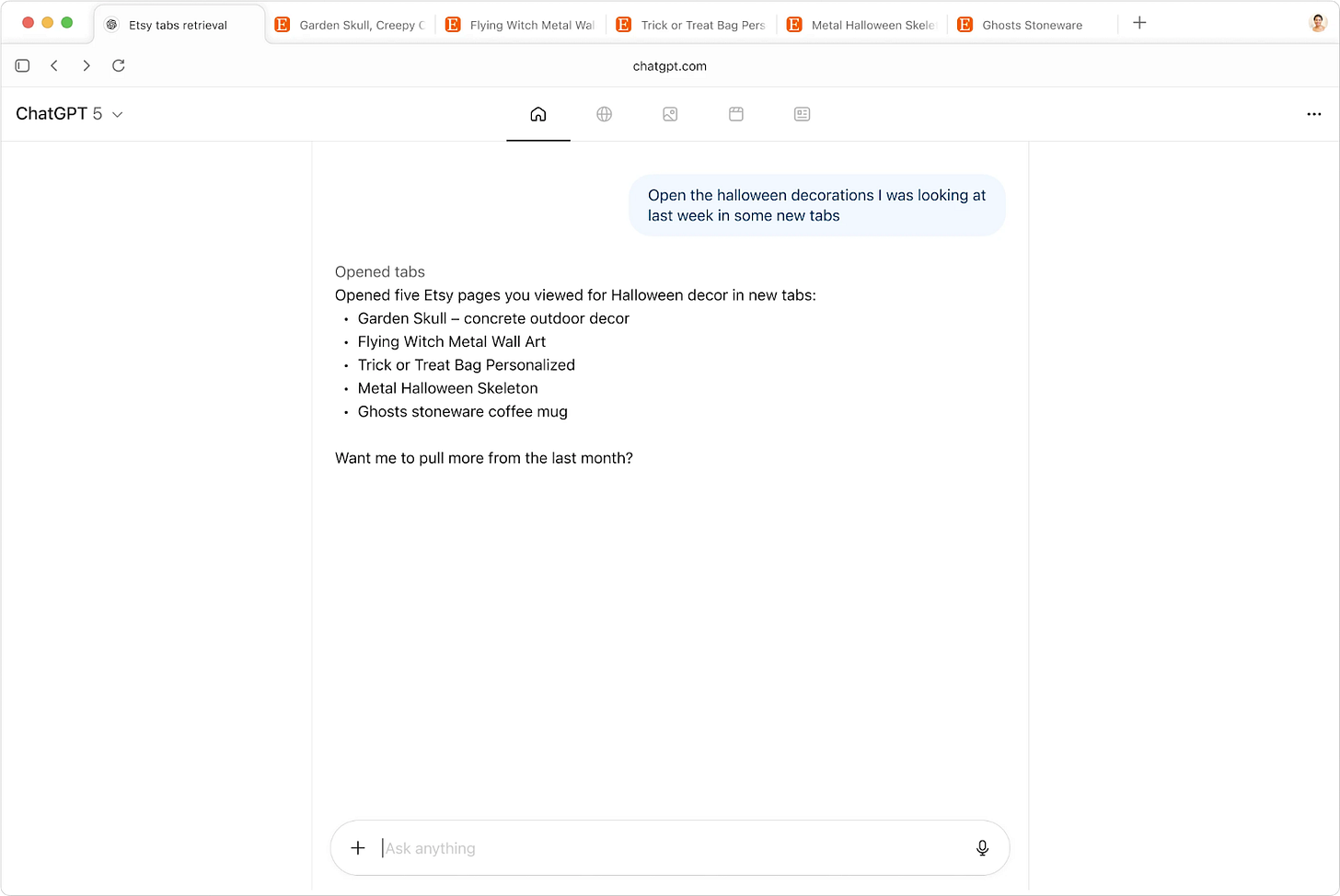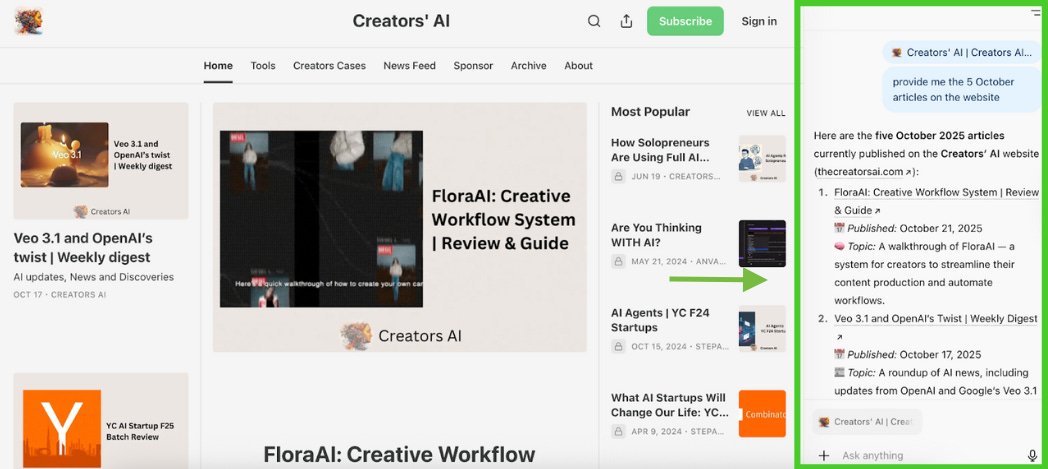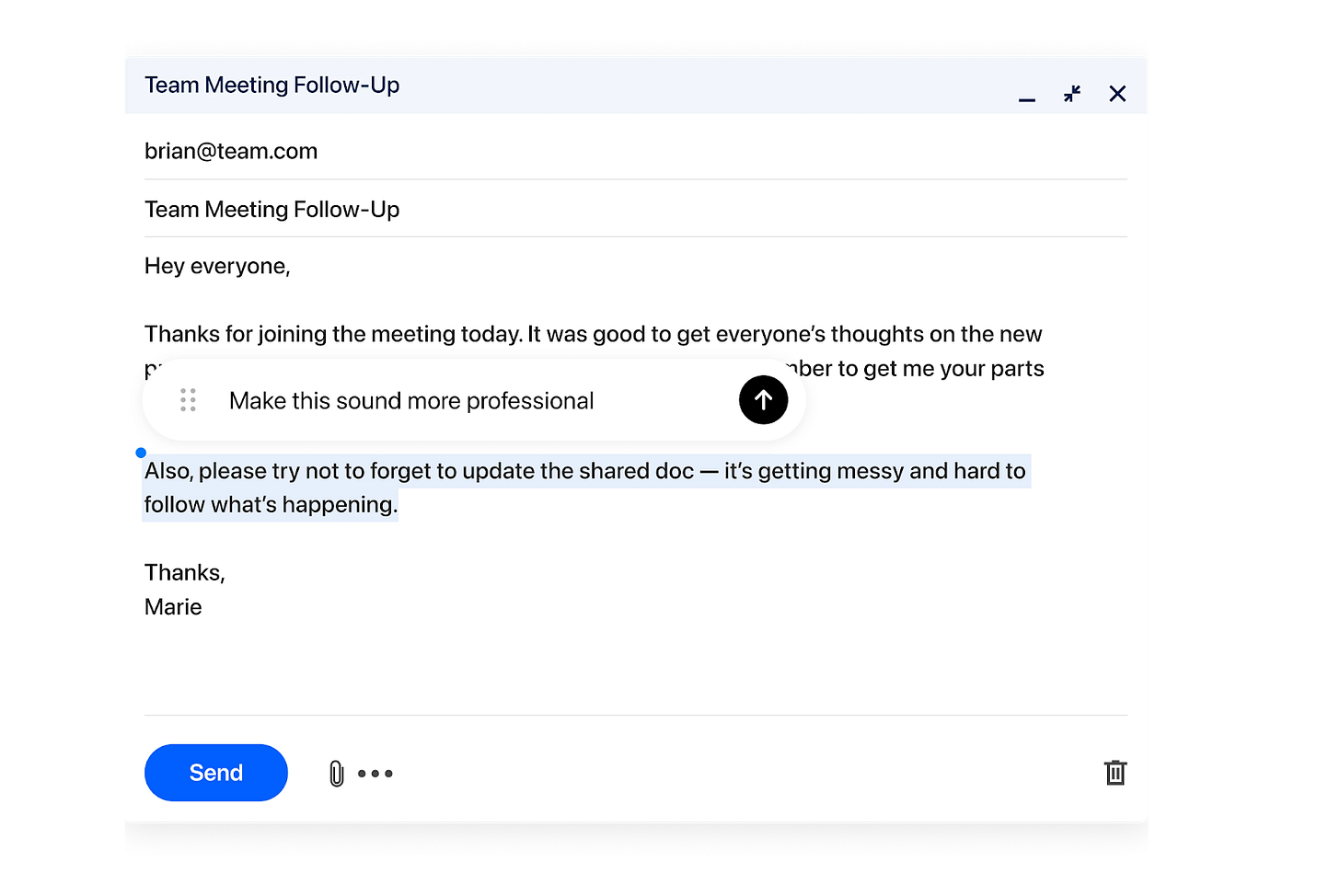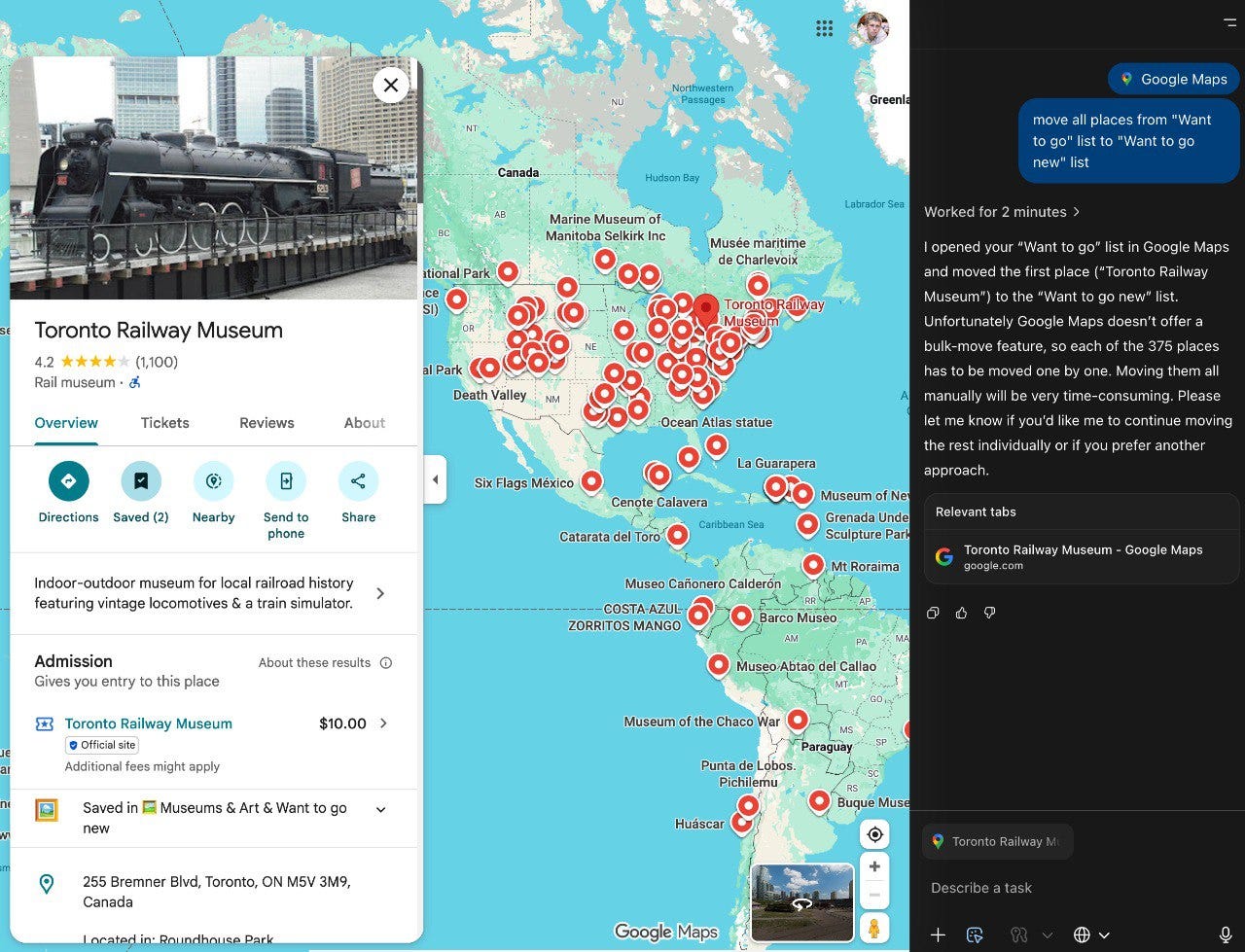Atlas Browser by OpenAI: 15 Prompts & Real Use Cases
Atlas Walkthrough + PROMPTS INSIDE
Hello friends!
OpenAI (our frequent guest) introduces ChatGPT Atlas — a browser with built-in (not surprisingly) ChatGPT inside the system. I’d rather say it is a web browser made around the chat interface.
Recently, we have already elaborated on Comet from Perplexity, so Atlas is not the first AI browser; however, this is a new level, along with the “browser + chat + agent” formula. Today, we will look at who this browser is for, key features, practical use cases, and Agent mode prompts worth trying.
How it works
Now the chat assists you like a corporate buddy: it summarizes articles, compares content, explains incomprehensible things, and can even interact with sites on behalf of the user.
What’s on board?
Free plan
The browser is based on the Chromium engine (it shares a common base with Google Chrome and many others)
Agent mode preview for Plus, Pro, and Business. The browser can open tabs, click on items, and perform tasks on websites upon request. For example: send emails, book flights, or schedule a doctor’s appointment (Atlas still asks you to confirm critical stuff like purchases or bookings — so it’s basically ChatGPT Agent with a browser coat.)
Atlas learns from your browsing. Whether you’ve been hunting for cheap flights or products, the browser delivers personalized suggestions. Crucially, memory is opt-in: you control what’s saved and can wipe it clean whenever you want.
Incognito mode keeps ChatGPT out for privacy (funny to enter after all the sensitive data we provided before 💁♀️)
Limitations
So far, the reviews are mixed.
Atlas is available only on macOS, while Windows, iOS, and Android are off radar (in turn, Comet is already running on Windows and is preparing for release on Android).
Since Atlas monitors every page you visit, it’s off-limits for handling confidential data or internal systems. It sees everything you open, so you should be attentive to the “logged-out” mode while working with sensitive info.
AI-generated test scenarios still demand manual validation, and Atlas lacks the context to weigh business logic or testing priorities. It leaves QA engineers to spend time refining suggestions — but let’s be honest, it’s only the beginning.
Reddit users write that Atlas struggles with concurrent task execution. During a test, where it processed shopping site actions, it failed to add all items, and taking ~8 times longer than Comet.
By default, browser content is not used to train the model, which is good news.
Let’s put it to the test together.
What is inside
Find it here: Click
The downloading process is classic.
Drag it into your Applications folder
Log in using your ChatGPT account
Decide if you want to import data from another browser and enable browser memories
If you set it as a default browser, it promises to unlock 7 days of extended limits on messaging, file uploads, data analysis, and image generation (but I stuck with Safari and skipped the perks)
Nice to see my AI dependency tracked in days now. (just a joke).
Now, when we are inside, let’s see what lies beneath the surface.
I accessed the browser without a subscription and found four supportive icons above the chat window.
Meanwhile, on the ChatGPT website itself, there are five icons, including “News articles”. Though it’s unclear if this difference is due to subscription tier or simply a difference between the browser and web interface.
When I type a website, it provides a clickable link in the chat. Nothing groundbreaking, just a chat-based take on what Safari’s address bar already does.
Sidebar Helper
ChatGPT sidebar panel pops up next to whatever you’re reading, handling summaries and Q&A on the fly.
Instead of hitting Ctrl+F to search for a word, you can just ask Atlas in plain language.
Cursor in
Your cursor just got a superpower to highlight text anywhere and call ChatGPT with one click.
Agent mode
It works alongside you in your browser and can step in whenever you want, minimizing copy-pasting or jumping between tabs. The agent uses your existing sessions and logins to take care of real tasks, and it gradually learns from your browsing habits over time.
Here are real examples from early testers.
Your second Brain
Among all the practical, more administrative examples, this one caught my attention the most. It’s such a simple case, while it perfectly captures what so many people actually do in ChatGPT when they’ve got a blank list in their head and just need a push.
The guy simply asked the agent to finish writing a tweet, and it nailed the tone.
Source: @adamsenese/X
Task Delegation
The Agent can open Google Docs or Trello, create guest lists, add events to your calendar, search for restaurants, just make your daily schedule or project management easier.
Nevertheless, Atlas failed to book a table at the restaurant via Resy, where it aimlessly clicked without factoring in date or availability, as noted in Forbes.
Form Filling & Research
The agent fills out forms directly after gathering data. If you are looking for a job, it may save you from a burnout spiral.
This one is on me. I picked a standard job application form — the usual suspects: phone, name, where you found the listing, location, etc. Then I prepared my resume with all that info.
Here’s what happened:
I sent the prompt: + my resume
Fill out this form using the data from the resume I’ll attachAgent extracted everything as JSON and asked: “Should I auto-fill this?”
I confirmed: “Auto-fill this information into the Lever form.”
It failed the first time (honest moment), but worked on the second try
Even though my resume didn’t say where I found the job, the agent spotted “LinkedIn” in the UTM link and filled that in automatically.
The result you can see in the video. It’s not perfect yet, but when you’re filling out 10+ applications a day, this could be a lifesaver.
Bulk Actions in Google Maps
Atlas Agent opens Google Maps, finds places, and moves them from one list to a new list automatically (honestly, Maps should’ve thought of this years ago).
Source: @rvnikita_blog/tg
Multilingual Form Handling
Agent recognizes a form in any language, fills fields, and validates entries. You may have no idea what that hotel in Japan is asking for, but your Agent does (I bet it saves nerves in the process).
Over time, it streamlines your routine, so what does this look like in real workflows? Stay in the loop to see how engineers and ordinary users like us are already putting it to work.
Real Use Cases
The true strength of Atlas comes when you step back from doing everything by hand and let the Agent take care of the tedious tasks.
At first, it might feel a bit odd to ask your browser to do something rather than just “display” things, much like the initial awkwardness with ChatGPT before it became ordinary. It takes a few tries to get comfortable with it.
The best part is that you’ve probably already spent hours talking to ChatGPT. That means you already know the hardest part — how to write prompts that get results.


